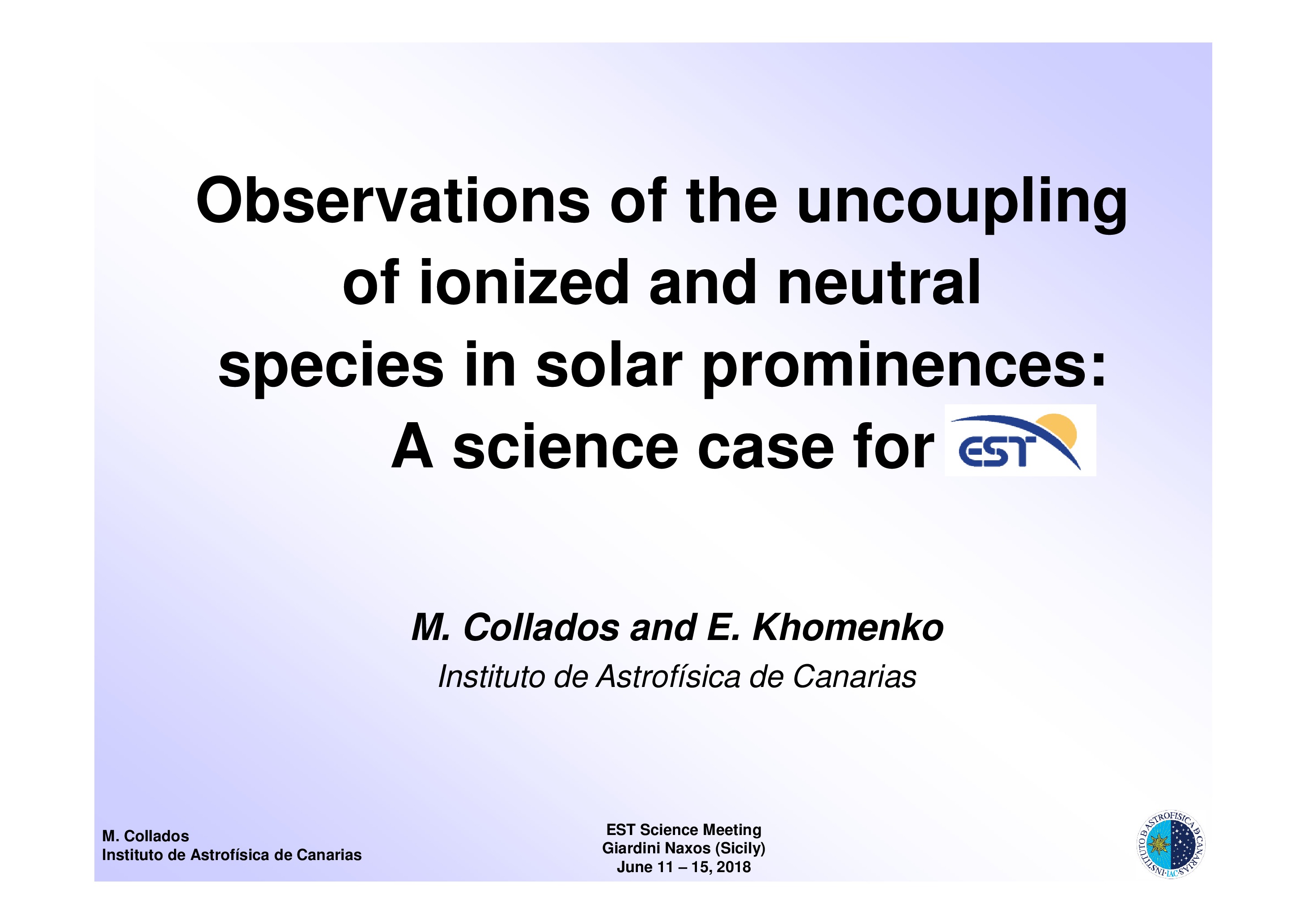Observations of the uncoupling of ionized and neutral species in solar prominences: A science case for EST
Affiliation
Instituto de Astrofísica de Canarias
Main category
Natural Sciences (Astrophysics and Astrononmy)
Abstract
The aim of this work is to measure possible differences in the dynamics of the ionized and neutral components of the solar plasma, as a manifestation of partial ionization effects due to an incomplete collisional coupling, causing deviations from ideal MHD. Here we report the detection of differences in ion and neutral velocities in prominences using very high temporal resolution spectral data obtained in 2012 at the German VTT (Observatorio del Teide, Tenerife). A time series of scans of a small portion of a solar prominence was obtained simultaneously with a high cadence using spectral lines of two elements with different ionization states, namely the CaII 8542 A and the HeI 10830 A. Displacements, widths and amplitudes of both lines were carefully compared to extract dynamical information about the plasma. Many dynamical features are detected, such as counterstreaming flows, jets and propagating waves. In all the cases we find a very strong correlation between the parameters extracted from the lines of both elements, confirming that both trace the same plasma. Nevertheless, we also find short-lived transients where this correlation is lost. These transients are associated with ion-neutral drift velocities of the order of several hundred m/s. The patches of non-zero drift velocity show coherence on time-distance diagrams. We continue and expand this initial study with another set of data, also obtained under similar conditions at the VTT in 2016, this time including He I D3 5876 A, Halpha, and Ca II 8542 A, measured simultaneously. The new dataset has an advantage of including two lines of neutral elements with different atomic mass, together with one line of an ionized element. The importance of such kind of simultaneous observations for detecting partial ionization effects will be emphasized. The EST instrumentation should be designed to make possible these type of observations with the highest temporal cadence and spatial resolution.
Do you have problems viewing the pdf-file? Download presentation
here
If the presentation contains inappropriate content, please
report the presentation. You will be redirected to the landing page.
